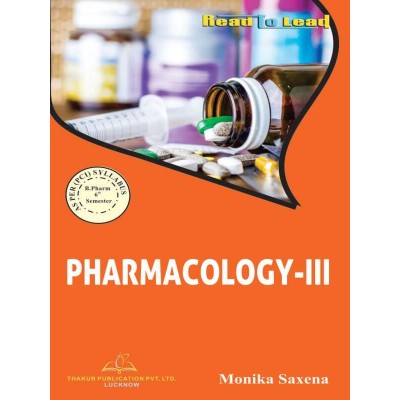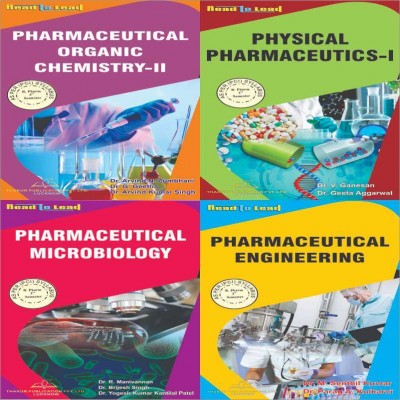Categories
- Pharmacy
-
Nursing
-
MBA
-
BBA
- U.P. State University
- Veer Bahadur Singh Purvanchal University, Jaunpur
- Chaudhary Charan Singh University, Meerut
- Dr. Bhimrao Ambedkar University, Agra
- Chhatrapati Shahu Ji Maharaj University, Kanpur
- Mahatma Jyotiba Phule Rohilkhand University, Bareilly
- Mahatma Gandhi Kashi Vidyapith, Varanasi
- Dr. Ram Manohar Lohia Avadh University, Ayodhya
- Deen Dayal Upadhyaya Gorakhpur University
- Prof. Rajendra Singh (Rajju Bhaiya) University, Prayagraj
-
BCA
- UP State Universities
- University of Pune
- I.K.Gujral Punjab Technical University (PTU)
- University of Rajasthan
- Rashtrasant Tukadoji Maharaj Nagpur University
- Uttar Pradesh NEP2020
- University of Rajasthan ,Jaipur (According to NEP-2020)
- BCCA (B. Com - Computer Science)
- Haryana
- West Bengal
- BBA (CA)
- PUNE BCA (Sci,Commerce)/B.Com (CA)
- Dr. A. P. J. Abdul Kalam Technical University, Lucknow ( AKTU )
- MCA
-
B Ed
- Lucknow University B.Ed Books
- Chaudhary Charan Singh University/Maa Shakambhari University, Saharanpur
- Dr Bhim Rao Ambedkar University, Agra
- Mahatma Gandhi Kashi Vidyapeeth, Varanasi
- Chhatrapati Shahu Ji Maharaj University
- Prof. Rajendra Singh (Rajju Bhaiya) University, Prayagraj (PRSU)
- Mahatma Jyotiba Phule Rohilkhand University(Mjpru), Bareilly
- Dr. Ram Manohar Lohia Avadh University, Ayodhya
- Bundelkhand University, Jhansi
- B.A,B.ed
- B.Sc, B.ed
- Deen Dayal Upadhyaya Gorakhpur University
- Veer Bahadur Purvanchal University (VBPU)
- Maharaja Suhel Dev State University ,Azamgarh (MSDSU)
- Raja Mahendra Pratap Singh State University, Aligarh (RMPSSU)
- Barkatullah Vishwavidyalaya (Bhopal)
- Jiwaji University (Gwalior)
- Vikram University (Ujjain)
- Dr. Harisingh Gour University (Sagar)
- Devi Ahilya Vishwavidyalaya (Indore)
- Rani Durgavati Vishwavidyalaya (Jabalpur)
- Awadhesh Pratap Singh University (Rewa)
- Maharaja Chhatrasal Bundelkhand University (Chhatarpur)
- D. EL. ED
- TET
-
B Com
-
B Sc
- B.Sc. U.P. State Universities Common Syllabus NEP
- Veer Bahadur Singh Purvanchal University, Jaunpur
- University of Lucknow
- Chaudhary Charan Singh University, Meerut
- Madhya Pradesh
- Chhatrapati Shahu Ji Maharaj University, Kanpur
- Dr. Bhimrao Ambedkar University, Agra
- Mahatma Gandhi Kashi Vidyapith, Varanasi
- DEEN DAYAL UPADHYAYA GORAKHPUR UNIVERSITY
- Prof. Rajendra Singh (Rajju Bhaiya) University, Prayagraj
- Dr. Ram Manohar Lohia Avadh University, Ayodhya
- Mahatma Jyotiba Phule Rohilkhand University, Bareilly
- Uttarakhand State Universities
- B.Sc. Bihar Universities Common Syllabus NEP
- University of Rajasthan (Jaipur)
- Haryana
-
Bachelor of Arts [B.A.]
- B.A. Of U.P. State Universities Common Syllabus NEP
- Veer Bahadur Singh Purvanchal University, Jaunpur
- University of Lucknow
- Chaudhary Charan Singh University, Meerut
- Chhatrapati Shahu Ji Maharaj University, Kanpur
- Dr. Bhimrao Ambedkar University, Agra
- Mahatma Gandhi Kashi Vidyapith, Varanasi
- Deen Dayal Upadhyaya Gorakhpur University
- Prof. Rajendra Singh (Rajju Bhaiya) University, Prayagraj
- Dr. Ram Manohar Lohia Avadh University, Ayodhya
- Mahatma Jyotiba Phule Rohilkhand University, Bareilly
- Madhya Pradesh
- Uttarakhand
- Bihar
- University of Rajasthan (Jaipur Syllabus as Per NEP2020)
- Haryana NEP-2020
- B Tech
- LLB
- SWA Education
Biochemistry Book B.Pharm 2nd Semester

Click below to Buy E-Book Edition:
» The PCI B.Pharm II Semester Biochemistry Book is a comprehensive guide for students pursuing their Bachelor of Pharmacy degree in India. This book covers the fundamental concepts of biochemistry and their relevance to pharmaceutical sciences. It covers a wide range of topics such as biomolecules, enzymes, metabolism, genetics, and molecular biology.
The book also includes practical applications of biochemistry in drug discovery, drug development, and quality control of pharmaceutical products. Written in a simple and easy-to-understand language, this book provides a thorough understanding of biochemistry, which is essential for a successful career in the pharmaceutical industry. It is an ideal reference guide for students, researchers, and practitioners in the field of pharmacy.
Authors: Dr.G. Murugananthan , Prof. (Dr.) Amredra Pratap Yadav ISBN No.: 978-93-5755-996-6
| Fast & All India Delivery |
| Written by Experienced Authors |
| As per approved syllabus of P.C.I. |
| With Clear Explanations and Example |
| Provides In-Depth Coverage of the Subject Matter |
Tax excluded
Click below to Buy E-Book Edition:
» The PCI B.Pharm II Semester Biochemistry Book is a comprehensive guide for students pursuing their Bachelor of Pharmacy degree in India. This book covers the fundamental concepts of biochemistry and their relevance to pharmaceutical sciences. It covers a wide range of topics such as biomolecules, enzymes, metabolism, genetics, and molecular biology.
The book also includes practical applications of biochemistry in drug discovery, drug development, and quality control of pharmaceutical products. Written in a simple and easy-to-understand language, this book provides a thorough understanding of biochemistry, which is essential for a successful career in the pharmaceutical industry. It is an ideal reference guide for students, researchers, and practitioners in the field of pharmacy.
Authors: Dr.G. Murugananthan , Prof. (Dr.) Amredra Pratap Yadav ISBN No.: 978-93-5755-996-6
| Fast & All India Delivery |
| Written by Experienced Authors |
| As per approved syllabus of P.C.I. |
| With Clear Explanations and Example |
| Provides In-Depth Coverage of the Subject Matter |
Syllabus
Code: BP203T
Biochemistry
|
Unit
|
Contents
|
Hours
|
|
I
|
· Biomolecules Introduction, classification, chemical nature and biological role of carbohydrate, lipids, nucleic acids, amino acids and proteins.
· Bioenergetics Concept of free energy, endergonic and exergonic reaction, Relationship between free energy, enthalpy and entropy; Redox potential. Energy rich compounds; classification; biological significances of ATP and cyclic AMP. |
08
|
|
II
|
· Carbohydrate Metabolism
Glycolysis – Pathway, energetics and significance. Citric acid cycle- Pathway, energetics and significance. HMP shunt and its significance; Glucose-6-phosphate dehydrogenase (G6PD) deficiency. Glycogen metabolism pathways and Glycogen Storage Diseases (GSD). Gluconeogenesis- Pathway and its significance. Hormonal regulation of blood glucose level and Diabetes mellitus.
· Biological Oxidation
Electron Transport Chain (ETC) and its mechanism. Oxidative phosphorylation & its mechanism and substrate phosphorylation.
Inhibitors ETC and oxidative phosphorylation/Uncouplers.
|
10
|
|
III
|
· Lipid Metabolism β-oxidation of saturated fatty acid (Palmitic acid). Formation and utilization of ketone bodies; ketoacidosis. De novo synthesis of fatty acids (Palmitic acid). Biological significance of cholesterol and conversion of cholesterol into bile acids, steroid hormone and vitamin D. Disorders of lipid metabolism- Hypercholesterolemia, atherosclerosis, fatty liver and obesity.
· Amino Acid Metabolism General reactions of amino acid metabolism: Transamination, deamination & decarboxylation, urea cycle and its disorders. Catabolism of phenylalanine and tyrosine and their metabolic disorders (Phenyketonuria, Albinism, alkeptonuria, tyrosinemia). Synthesis and significance of biological substances; 5-HT, melatonin, dopamine, noradrenaline, adrenaline. Catabolism of heme; hyperbilirubinemia and jaundice. |
10
|
|
IV
|
Nucleic Acid Metabolism and Genetic Information Transfer
Biosynthesis of purine and pyrimidine nucleotides. Catabolism of purine nucleotides and hyperuricemia and gout disease. Organisation of mammalian genome. Structure of DNA and RNA and their functions. DNA replication (semi conservative model), Transcription or RNA synthesis. Genetic code, Translation or protein synthesis and inhibitors.
|
10
|
|
V
|
Enzymes Introduction, properties, nomenclature and IUB classification of enzymes. Enzyme kinetics (Michaelis plot, Line Weaver Burke plot). Enzyme inhibitors with examples. Regulation of Enzymes- Enzyme induction and repression, allosteric enzymes regulation. Therapeutic and diagnostic applications of enzymes and isoenzymes. Coenzymes –Structure and biochemical functions. |
07
|
8 other products in the same category:
Your review appreciation cannot be sent
Report comment
Report sent
Your report cannot be sent
Write your review
Review sent
Your review cannot be sent






















